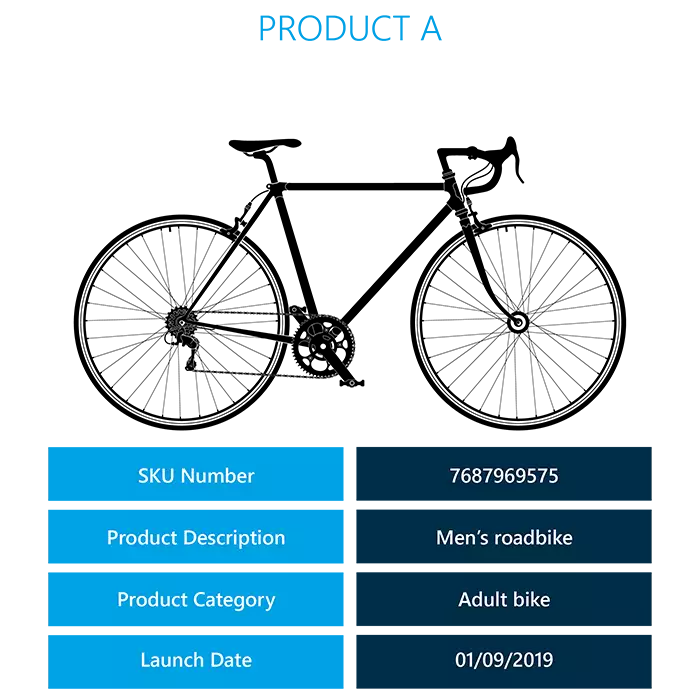Table of contents
Table of contents- 7 Steps to Profitable Product Lifecycle Management
- A complete guide to product lifecycle management
- What are the benefits of effective product lifecycle management?
- What are the 5 stages of product lifecycle management?
- What does ‘good’ product lifecycle management look like in each phase?
- SEE SLIM4 IN ACTION
- Product lifecycle management & stocking decisions
- An essential tool in your product lifecycle management toolkit
- How can Sales & Operations Planning (S&OP) support effective product lifecycle management?
- Some final thoughts on Product Lifecycle management
- Product Lifecycle Management FAQ
A complete guide to product lifecycle management
Product lifecycle management is a game of risk. Hedge your bets too soon & you’ll pay a hefty price. Likewise, roll the dice too late & you may miss out on the jackpot! So how can you improve your odds?
In this article, we will dive into the topic of product lifecycle management & reveal what steps you can take to cut costs, maximise sales & boost profitability.
What is product lifecycle management?
Let’s start with the basics.
From the point of initiating a new product launch right through to phasing an old product out, every product goes through several key phases. This is commonly known as the Product Lifecycle.
At each step of the cycle, supply chain teams have to make critical decisions about the product’s future. As a result, such decisions should not be taken lightly.
Product lifecycle management is all about integrating data, people and processes to strike the optimal balance between product availability and risk at every stage.
By taking steps to improve visibility and control, supply chain teams can mitigate risk, drive down costs and the customers the best possible experience.
What are the benefits of effective product lifecycle management?
By managing product lifecycles effectively, businesses can ensure products move smoothly through the introduction, growth, maturity, and end-of-life phase.
However, product lifecycle management should also ensure continuity. Through the seamless phasing in and out of products, effective product lifecycle management should help businesses to avoid cannibalisation and obsolete stock.
What are the 5 stages of product lifecycle management?
Every product goes through a product lifecycle consisting of five phases:
Review
- This is where the business assesses whether the new product has the potential to succeed
- Before taking the plunge, the business needs to be confident that the new product launch is worth the effort
Introduction
- At this point, the product has just been introduced to the range
- The first purchase order is based on the internal forecast, typically based on a similar product in the range, or to fulfil a customer order
Growth
- This is typically the first couple of months after the product has been introduced
- Sales must be closely monitored
- By tracking how actual sales compare to the forecasts, decisions on the continuation of the product can be made
- The forecast must be continually updated in response to the evolving levels of demand
Maturity
- At this point, sales growth has plateaued
- The product is established in its market and now regular replenishment orders are in place
- Buffer stock must be optimised to avoid stock-outs
- However, demand should still be monitored to spot any signs of decline as the product moves toward the end–of–life phase
End of life
- The trend of the product is now in a steady decline.
- We must stop placing new orders and sell through the residual stock
- The goal here is to minimise the amount of obsolete stock
What does ‘good’ product lifecycle management look like in each phase?
There is no one-size-fits-all approach when it comes to product lifecycle management.
After all, managing a product that has only just been introduced is a different ball game compared to managing a product at the end of the product lifecycle management phases.
Each of the product lifecycle management stages demands a different approach. In the next section, we will look at the different considerations, tactics & strategies you should think about for each step of the product lifecycle.
So, let’s dive in.
The review phase
Before you introduce a new product, you need to do your homework!
The question you need to ask is: Do I need to launch this item?
Does it make sense to introduce a particular product at all? For example, if you already have 380 rubbish bins in your product range, does it make sense to consider launching no 381 to the marketplace?
Likewise, is it worth the risk?
Introducing a new product is never cheap. You have to pay for the inventory, invest in the marketing & ensure your operations are in place to get the product in front of the customer.
This all adds up to a huge amount of money and effort. Before you take a leap of faith, you have to be confident that the product makes sense.
Top tip: There are lots of things you need to think about before you give a potential new product launch the green light. To help you make more rational decisions at this point of the product lifecycle, check out our handy stocking checklist.
The introduction phase
The introduction phase is where the product enters the market. From a supply chain perspective, there are only two relevant questions:
1) How much should we purchase with the initial purchase order?
As we are talking about a new product, it is difficult to know how much we should order to begin with. Although we need a starting point to avoid forecasting blindly. Here are some of the things we can consider:
- Examine past sales data for similar products or products in the same category to attain useful insight into the potential demand for the new product.
- Analyse similar products offered by competitors to get an idea of how the new product may be received by the market.
- Consider the potential impact of marketing activities on the demand for the new product such as promotions, advertisements and offers.
- Anticipate the level of seasonality to ensure that you make the most of sales opportunities during holidays and peak sales seasons.
2) From which supplier should we buy these items?
Suppose we forecast the demand for the new product at 10,000 items for the next 6 months: this can go wrong in two ways. On one hand, it could be that after six months, it turns out we have sold only a few pieces. On the other hand, we could sell all 10,000 items in the first week.
This second scenario may sound like a great success until you realise that the products were bought in from the Far East with a lead time of 26 weeks.
Therefore, the importance of the second question becomes clear: where should you buy from?
It might be possible to find a cheaper supplier overseas. But this may force you to buy in a large quantity to fill a shipping container.
On the other hand, you could source more locally. But this may come at a premium!
Top tip: it’s important you right the right supplier. However, there may be multiple vendors who can fulfil your requirements. You can read our guide to help you make the best supplier selection for your business.
The difficult transition from introduction to the growth phase
The end of the introductory phase is not so difficult to pinpoint, at least in theoretical terms.
Exactly what marks the end of the introductory phase, is something you should define as a company in advance.
Businesses often set a fixed period for the new product to prove itself. For example, by achieving a certain level of turnover or margin.
Suppose the criteria for a new product is to generate a sales turnover of at least £25,000 within the first 6 months. If the product achieves this goal, we can accept this into our course assortment.
From this point, we need to track demand closely. If the product picks up traction in the market, our forecasts and replenishment cycles must pick this up as early as possible to maintain high levels of availability.
But what happens if the product fails to hit the turnover goal?
Well, in this case, it should move straight towards the phase-out phase.
The growth phase
Customers seem to like the product and as a result, demand is strong. At this stage, ensuring availability is essential: out-of-stocks are disastrous.
As a result, service levels are of greater importance than the optimisation of inventory or order transaction costs. However, this doesn’t mean you should forget about inventory completely. Using all the available data is not only possible but also important to develop a good forecast!
During the introduction phase, the forecast was based on so-called qualitative models (market knowledge, gut feeling and crystal balls). As the product moves through the product lifecycle, there is more data available, and we can start using quantitative trend models.
Determining economic order quantities is still a bit tricky as we have to base our requirements on future demand (and demand is still increasing).
If we were to rely solely on historic data, we would structurally underestimate future demand. This can also apply to how re-order levels should be determined.
The awkward ‘tween’ phase
All the euphoria has to come to an end at some point. Eventually, the time comes when the period of double-digit growth turns into a period of zero growth.
And then what should you do?
It is almost impossible to predict when this transition from growth to maturity will occur, so you need to be very alert to when that time finally arrives.
If we use a forecasting method in the growth phase, we have the opportunity to make use of a so-called ‘tracking signal’. This is an indicator that keeps track of whether a particular forecast methodology is still valid.
During the growth phase, we recognize that the sales figures follow a certain trend. However, at some point, the demand starts to follow a pattern without a trend. This means that the forecasting model is no longer appropriate. This is reflected in the difference between forecasts and actual.
The mature phase
From a logistics point of view, the maturity phase is the easiest phase to manage. Demand patterns are fairly stable resulting in simple forecasting models.
The order quantity rules (often based on the EOQ) are fairly straightforward as they are determined by the system parameters. But the inventory strategies, models and order levels certainly differ from those required during the growth phase.
Therefore, they need to be adjusted to prevent the batch sizes and re-order levels from being too large; after all, we started with a trend in the growth phase.
In other words, if we do nothing, we will continue to build up excess inventory.
The decline phase
What we said about the transition from growth to maturity also holds for the transition from maturity to decline, only in reverse. The demand pattern now goes from stable to a (downward) trend.
Again, we can only determine this retrospectively and the tracking signal may play a useful role too.
This transition phase is critical because the risk of obsolescence now comes into play!
The product withdrawal phase
The final phase of the lifecycle is the so-called phase-out or product withdrawal phase. This corresponds with the end of the decline phase and involves the withdrawal of the product from the company’s range.
Sometimes this withdrawal can occur suddenly. For example, a new product is found to be unsafe soon after launch. Equally, in other cases, phase-out phase is a slower, gradual and planned process.
Product lifecycle management & stocking decisions
Throughout the product lifecycle, you have to take decisive action. Should you kill the product now or keep investing in it?
This isn’t just something we do at the decline stage. To ensure effective product lifecycle management, we have to review, analyse & optimise our decisions at every stage.
However, trying to justify reasons to cut a product from the assortment is likely to end in arguments and indecision. Instead, we should approach this the other way around: how can we justify the decision to keep certain products as stocked items? Of course, this means we need some clear criteria to follow.
Here are a few factors that you may wish to consider:
- How often should we sell this product?
- Do our A-customers demand this product?
- Do we need to include this product to attain other strategic benefits from the supplier?
- Is it a high revenue item?
- Can I return any unsold stock to my supplier?
- Is there an alternative product in our assortment?
- Do we make a lot of margin from this product?
- Are we the only supplier of this product to the market?
- Does the product generate traffic or demand for another related product?
- Do many different customers buy this product or is it bought by just a few?
- Does the customer expect next-day delivery or are they willing to wait?
Does the item have a high MOQ?
Of course, some of these points are likely to be more important to your business than others.
What is important here, is that the parameters are agreed upon by the wider business and align with the broader business goals.
Thankfully, this is where the product score card can help us out.
An essential tool in your product lifecycle management toolkit
So far, we have talked about the importance of product lifecycle and the need for clear stocking criteria. Now, we are going to take this a step further.
Firstly, it’s important to note that some elements of your criteria are more important than others. Secondly, only a handful of products within your assortment will satisfy ALL of your criteria.
Therefore, to make effective stocking decisions we need a weighted scorecard which we can apply to every product. Furthermore, we also need to set some boundaries based on the overall score.
For example, if a product scores less than 35 out of 100 overall, this product should be set as non-stocked. Of course, the weighting you use for each criterion will depend on what matters most to your business. And the boundaries you set will depend on the extent to which you hope to rationalise your range.
Let’s explore how the stocking index can be used in practice.
In this example, we need to decide about two different products. On one hand, we could continue to stock both products as part of our assortment. But we only want to do this if the items in question add value!
This is a relatively new addition to our assortment. As a product in the early phases of the product lifecycle, we need to think carefully about whether this product is worth the risk. So, let’s consider the numbers:
| Weight | Boundary | Performance | Score | |
|---|---|---|---|---|
| No. Order Lines | 20 | > 30 per month | 40 per month | 20 |
| Turnover | 20 | > £5000 | £6540 | 20 |
| Gross Margin | 10 | > 20% | 15% | 0 |
| No. Unique Customers | 20 | > 5 per month | 16 per month | 20 |
| No. A Customers | 10 | > 3 | 1 | 0 |
| Service or Strategic Item | 10 | Yes | Yes | 10 |
| Alternative Stocked Product | 5 | No | No | 5 |
| Supplier Ranking | 5 | Top 50 | In Top 50 | 5 |
| Total Score | 100 | 80 |
| Score 50 – 100 | Stocked ✔️ |
| Score 39 – 49 | Transition |
| Score 0 – 29 | Non-Stocked |
Based on the criteria, we can see that product A is a strong performer. Sure there are some areas where the product struggles. However, with an overall score of 80, product A more than comfortably fits our criteria.
For this reason, it’s probably best to keep this item stocked. However, perhaps we may need to review our forecasting & ordering tactics to ensure that we are fully aligned with the demands of the evolving product lifecycle.
Product B has been included within our stocked assortment for many years. With stable demand, this item was previously considered to be in the Mature product lifecycle stage. However, things can change & now it’s time to review this product. How do the numbers stack up:
| Weight | Boundary | Performance | Score | |
|---|---|---|---|---|
| No. Order Lines | 20 | > 30 per month | 3 per month | 20 |
| Turnover | 20 | > £5000 | £876 | £20 |
| Gross Margin | 10 | > 20% | 58% | 0 |
| No. Unique Customers | 20 | > 5 per month | 1 per month | 20 |
| No. A Customers | 10 | > 3 | 0 | 0 |
| Service or Strategic Item | 10 | Yes | No | 10 |
| Alternative Stocked Product | 5 | No | No | 5 |
| Supplier Ranking | 5 | Top 50 | Not in Top 50 | 5 |
| Total Score | 100 | 15 |
| Score 50 – 100 | Stocked |
| Score 39 – 49 | Transition |
| Score 0 – 29 | Non-Stocked ✔️ |
Product B seems to be a slow seller suggesting that this item may be in the decline phase of the product lifecycle.
We do not offer any similar products (although perhaps that is with good reason!). However, given that there is only 1 customer for this product, the risk of obsolescence is much higher. If the customer suddenly stopped buying, we could face a real excess issue.
Therefore, we should perhaps look to phase this item out of our assortment.
How can Sales & Operations Planning (S&OP) support effective product lifecycle management?
Product lifecycle management should be a highly collaborative process.
When it comes to launching a new product, there is always lots of excitement. Everyone has to do their bit to make the launch a success. However, here is where the problems begin!
Every team has a different opinion on how the product should be managed through each phase of the product lifecycle. And when it comes to the decline phase, the cracks often start to show. After all, no one wants to be responsible for a failing product!
The question is: how you can work with other business divisions to agree on the best approach to introduce new products, review existing lines, and manage end-of-life items?
Thankfully, this is where S&OP comes into play!
In essence, sales & operations planning helps achieve consensus on the following:
- Understand the benefit/potential cost of introducing a new item
- Agree upon the initial order quantity for a new item
- Establish appropriate measures to monitor the performance of new items
- Review recently added items and agree on the best course of action: continue or cut
- Prevent obsolesce through analysing product life cycles and determining the best approach for managing the end-of-life items
In the next section, we will explore how this collaborative approach works in practice.
Some final thoughts on Product Lifecycle management
Throughout this article, we have explored each stage of the product life cycle. We have also touched on some of the tactics & strategies you can deploy to achieve the best possible inventory position throughout the product lifecycle.
Sure, there are different degrees of risk at each phase of the product lifecycle. However, hopefully, this guide has given you some new ideas to tackle evolving product lifecycles.
Product Lifecycle Management FAQ
What is a product life cycle?
The product life cycle is the process which every product goes through. It is divided into several stages, and at each stage, supply chain teams face different challenges.
What would be examples of the product life cycle?
A good product lifecyle example could be the rise and fall of photography film. They were launched around 1880. In the introductory stage, they were expensive and exclusive, but their growing popularity led to mass production and a reduction in costs. During the maturity stage, they were a product used by virtually the entire population. With the advent of digital photo technology, they began their period of decline and today they are arguably considered a rarity.
What are the stages of the product cycle?
The product life cycle is generally divided into 4 stages: Introduction, Growth, Maturity, and Decline. However, businesses often add additional stages. These include an initial phase where the viability of a new product is assessed. Furthermore, there is also the withdrawal phase, when the product is removed from the market.
What is product lifecycle management?
Product lifecycle management is the process of managing each stage of the product lifecycle to maximise profits throughout the life of the product. This involves making strategic and tactical decisions, such as optimising inventory levels, investing in advertising, reducing production costs, modifying the design, etc.
What is the stock index?
The stock index is a tool that, by weighting the variables of a given product, is used to decide whether an item should be incorporated – or kept – in stock. In product life cycle management, this is a useful tool for outlining the specific strategies for each phase of the cycle.











